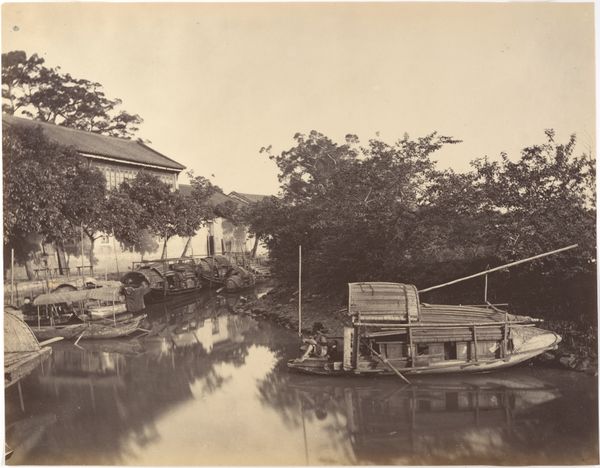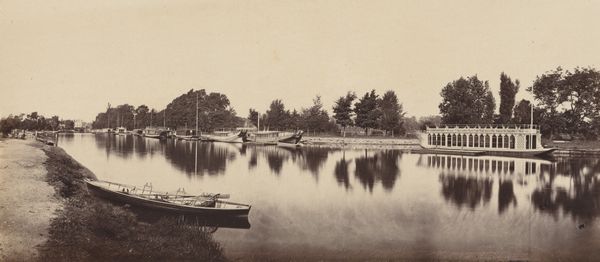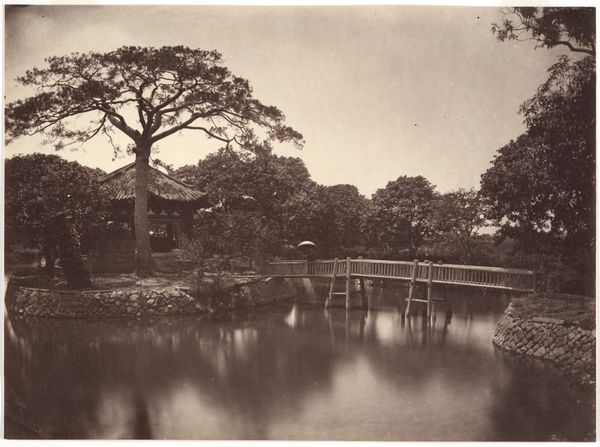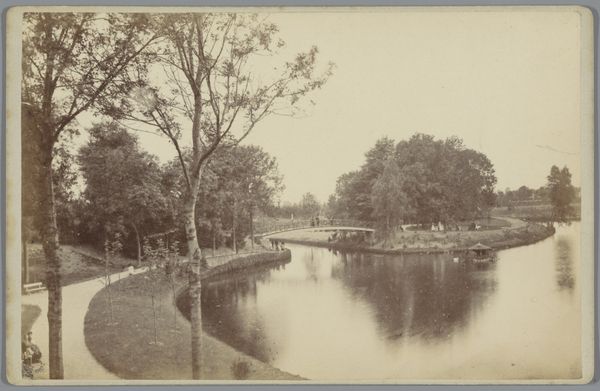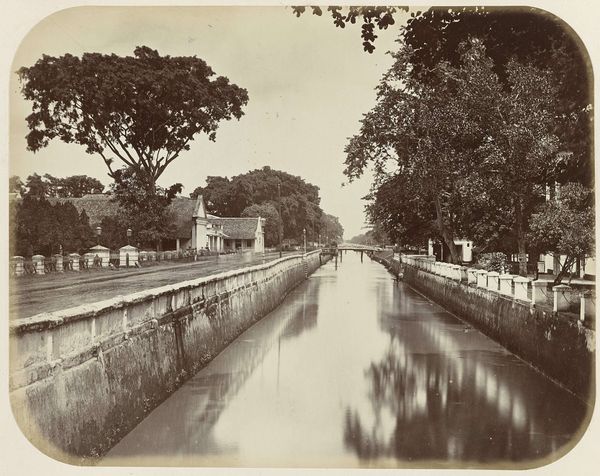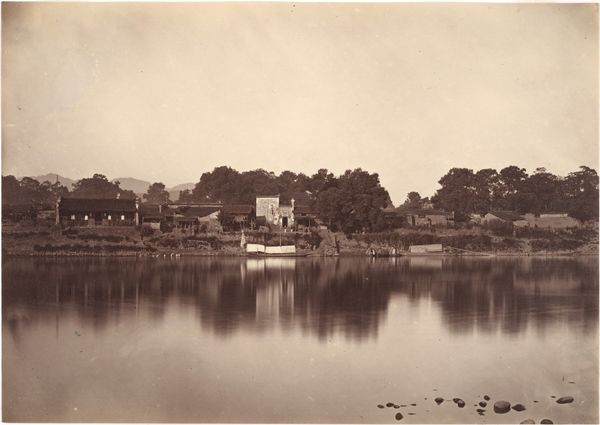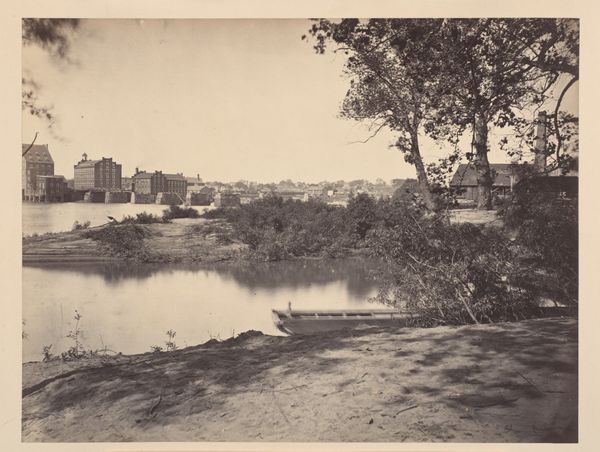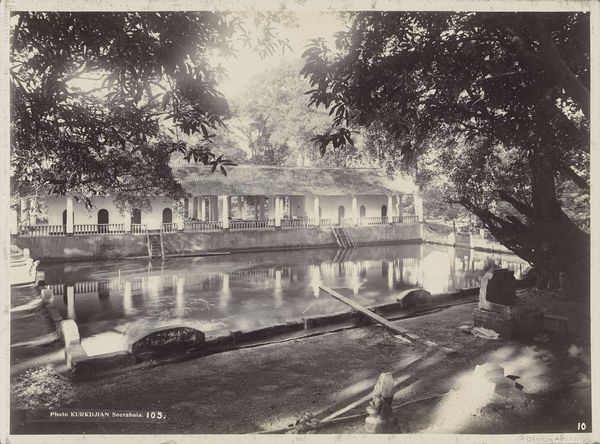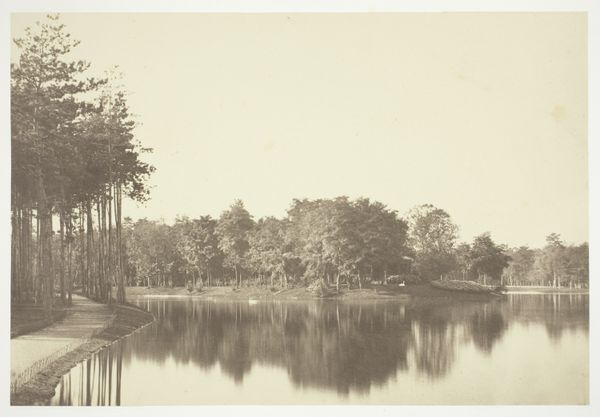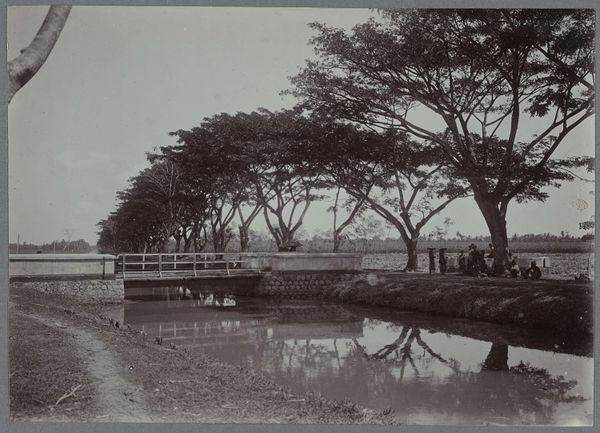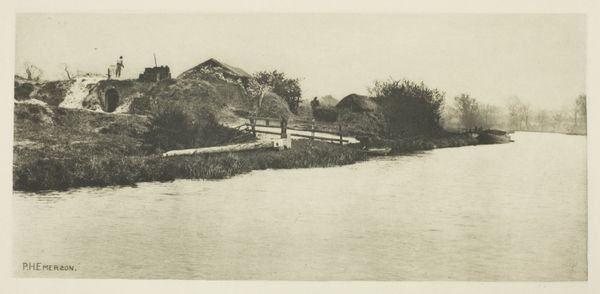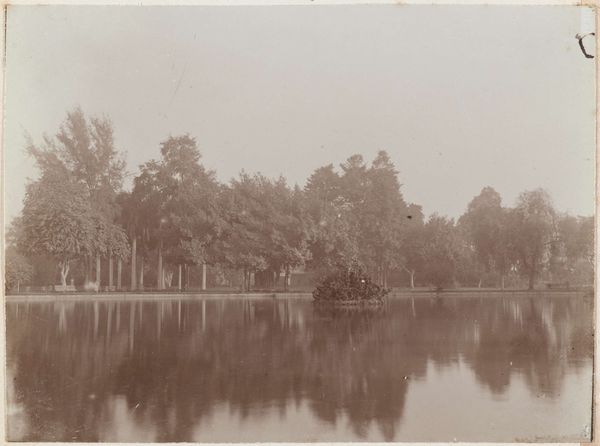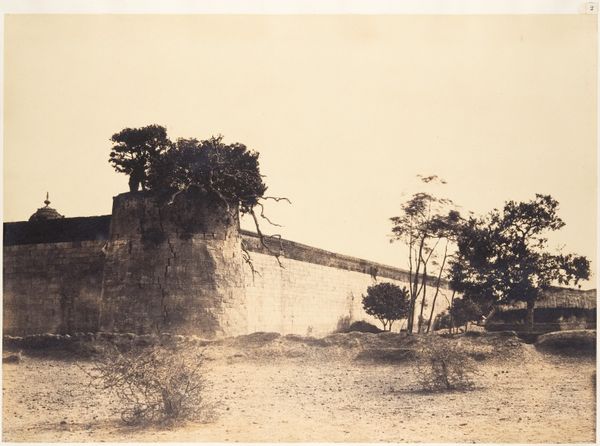
Satti Chaura Ghat on the banks of the Ganga river in Kanpur, Uttar Pradesh, India 1865 - 1866
0:00
0:00
photography, gelatin-silver-print
#
scenic
#
16_19th-century
#
countryside
#
landscape
#
river
#
outdoor photo
#
photography
#
outdoor scenery
#
nature friendly
#
orientalism
#
gelatin-silver-print
#
monochrome photography
#
nature environment
#
outdoor activity
#
scenic spot
#
shadow overcast
Dimensions: height 310 mm, width 192 mm, height 366 mm, width 416 mm
Copyright: Rijks Museum: Open Domain
Curator: Here we have Samuel Bourne's photograph, "Satti Chaura Ghat on the banks of the Ganga river in Kanpur, Uttar Pradesh, India," a gelatin-silver print from between 1865 and 1866. Editor: Wow, it's… strangely still. Like time is holding its breath. All that grey, the water so smooth, it almost feels like a dream you can't quite grasp. Curator: Bourne was very interested in documenting the landscape and architecture of India during the British colonial period. His images offer us a glimpse into a time of immense cultural and political change. We can appreciate that colonial-era photography participated actively in promoting specific images of India for both domestic consumption in England and the British imaginary of the colony itself. Editor: I see what you mean about "promotion" — that controlled perspective, the careful framing. But the human element pulls me in. There are figures dotted along the ghats...washing, just existing in that space. There’s a poignancy there. Curator: Indeed. The ghats, those steps leading down to the river, served as vital public spaces. Religious rituals, daily life— Bourne's work brings attention to the very structure and organization of public space at the time. Note how this monumental construction dwarfs any other potential human element present in the picture. Editor: Absolutely! The grandness is there, for sure. But there's an earthy vulnerability too. That embankment looks fragile, like it could crumble any minute. The branches seem almost weighed down by the humidity, you know? Maybe it's romanticizing, but I can almost smell the river, that combination of damp earth and something… ancient. It's like, empire building with one hand, but nature slowly reclaiming things with the other. Curator: Perhaps it’s not nature “reclaiming”, but rather a subtle reminder of the inherent limits and impermanence of all human structures. These images played a crucial role in shaping perceptions of India and reinforcing a sense of the exotic ‘other’. Editor: See, and I wonder, standing there behind his camera, was Bourne aware of that push and pull? That his meticulous photographs were documents of power and yet held a silent song of place? Curator: Ultimately, Bourne's legacy resides in his beautifully rendered photographs and how we contextualize them within the narratives of history, representation, and colonialism. Editor: Well, regardless of his intentions, I am deeply drawn in— the technical precision alongside a raw, lingering essence… Makes it unforgettable.
Comments
No comments
Be the first to comment and join the conversation on the ultimate creative platform.
